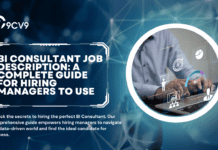Key Takeaways
- Construction CRM software centralizes client, project, and communication data to improve efficiency and streamline workflows.
- It automates lead management, enhances customer relationships, and supports better decision-making with real-time insights.
- Choosing the right Construction CRM boosts productivity, drives revenue growth, and gives companies a competitive edge.
In today’s increasingly competitive construction industry, maintaining strong client relationships, managing complex projects, and ensuring smooth communication across departments are no longer optional—they are essential for survival and growth. As construction firms juggle multiple stakeholders, bids, timelines, and budgets, the need for a centralized solution that enhances operational efficiency and streamlines client interactions has become more critical than ever. This is where Construction CRM (Customer Relationship Management) software plays a transformative role.

Construction CRM software is a specialized digital tool designed to meet the unique demands of construction businesses. Unlike generic CRM platforms, construction-specific CRMs are tailored to support sales, project management, client tracking, and communication processes within the construction domain. From general contractors and subcontractors to builders and developers, CRM systems are now integral to driving productivity, maximizing sales opportunities, and improving client satisfaction throughout the project lifecycle.
What sets Construction CRM software apart is its ability to organize complex data and workflows in a structured, intuitive interface. It provides a 360-degree view of every client, project, and lead, empowering construction companies to stay on top of their communications, follow-ups, and sales pipeline. Whether it’s managing a lead from the initial inquiry stage, tracking bid submissions, or recording change orders and client meetings, a well-implemented construction CRM ensures that all essential information is accessible in one place—reducing miscommunication, avoiding costly delays, and enhancing overall business performance.
Furthermore, the modern construction CRM goes beyond simple contact management. It often includes powerful features like project tracking, task scheduling, automated follow-ups, document storage, proposal management, and integration with third-party construction tools such as project management platforms, accounting software, and cloud-based collaboration systems. These capabilities enable teams to eliminate silos, reduce redundancy, and ensure that every department—from sales to field teams—remains aligned with real-time updates.
In an industry where every lead matters and project execution depends heavily on timely information and coordination, Construction CRM software offers a clear strategic advantage. It serves as the backbone of relationship-building and project efficiency, allowing businesses to move away from spreadsheets, emails, and manual workflows toward more automated, scalable, and intelligent systems.
This blog will delve deeper into what Construction CRM software is, explore its core features and functionality, and explain how it works to improve business outcomes in the construction industry. Whether you are a growing contractor looking to manage your expanding client base or a large construction firm aiming to optimize your bidding and sales processes, understanding how a Construction CRM works could be a game-changer for your operational success.
Before we venture further into this article, we would like to share who we are and what we do.
About 9cv9
9cv9 is a business tech startup based in Singapore and Asia, with a strong presence all over the world.
With over nine years of startup and business experience, and being highly involved in connecting with thousands of companies and startups, the 9cv9 team has listed some important learning points in this overview of What is Construction CRM Software and How It Works.
If your company needs recruitment and headhunting services to hire top-quality employees, you can use 9cv9 headhunting and recruitment services to hire top talents and candidates. Find out more here, or send over an email to [email protected].
Or just post 1 free job posting here at 9cv9 Hiring Portal in under 10 minutes.
What is Construction CRM Software and How It Works
- What is Construction CRM Software?
- Why Construction Companies Need CRM Software
- How Does Construction CRM Software Work?
- Key Features to Look for in Construction CRM Software
- Top Benefits of Using a Construction CRM
- How to Choose the Right Construction CRM for Your Business
- Common Challenges When Adopting Construction CRM Software
- Is Construction CRM Worth the Investment?
1. What is Construction CRM Software?
Construction CRM (Customer Relationship Management) software is a specialized digital tool designed to help construction businesses manage client relationships, streamline communication, track project opportunities, and optimize sales pipelines. Unlike generic CRM platforms, construction CRMs are built to accommodate the industry’s unique needs—such as bid management, subcontractor coordination, and long project cycles.
This section explores what construction CRM software is, how it differs from traditional CRM systems, who uses it, and what features make it indispensable in today’s construction workflows.
Understanding the Core Concept of Construction CRM Software
Definition and Purpose
- A platform that centralizes all client, lead, and project-related data for construction companies.
- Helps teams manage interactions with clients, subcontractors, vendors, and internal staff from one system.
- Designed specifically to track construction-specific workflows like bidding, proposal submissions, project follow-ups, and lead nurturing.
Key Objectives
- Increase visibility across the client lifecycle.
- Enhance the efficiency of sales and business development teams.
- Improve responsiveness and client satisfaction.
- Enable real-time collaboration across sales, marketing, and project teams.
How Construction CRM Differs from Traditional CRM Software
| Feature/Functionality | Generic CRM Software | Construction CRM Software |
|---|---|---|
| Contact Management | Basic customer database | Includes subcontractors, vendors, and clients |
| Sales Pipeline | Standard sales funnel | Bid tracking, RFI follow-ups, proposal stages |
| Project Integration | Often missing or minimal | Syncs with construction management tools |
| Proposal & Quote Management | Limited or manual | Built-in quoting and bid management tools |
| Mobile Field Access | Not industry-optimized | Designed for field teams and mobile workers |
| Construction Workflows | Requires customization | Pre-built construction workflows included |
Key Users of Construction CRM Software
Construction CRM tools are utilized across various roles within construction businesses:
1. General Contractors
- Use CRM to track project bids, client details, and vendor coordination.
- Manage subcontractor data and track project stages.
2. Sales & Business Development Teams
- Monitor lead generation, opportunity progress, and proposal statuses.
- Automate outreach, client nurturing, and follow-up reminders.
3. Project Managers
- Access client histories and communication logs.
- Coordinate with stakeholders using centralized information.
4. Builders and Developers
- Maintain strong relationships with investors, buyers, and architects.
- Use CRM for long-term development planning and communication.
5. Small-to-Medium Contractors
- Replace spreadsheets and manual contact tracking with automated systems.
- Benefit from mobile access on job sites.
Essential Features of Construction CRM Software
Below are some core functionalities tailored to the construction industry:
1. Lead & Opportunity Management
- Capture leads from websites, emails, and referrals.
- Assign leads to team members based on region, project type, or capacity.
- Track opportunity stages (e.g., inquiry > site visit > proposal > won/lost).
2. Bid & Proposal Tracking
- Centralize bid invitations and manage bid status in real-time.
- Store historical quotes and proposals for reference.
- Automate follow-ups with potential clients.
3. Contact & Communication History
- Maintain detailed profiles for clients, vendors, and partners.
- Log emails, calls, meetings, and follow-ups within each contact profile.
4. Document Management
- Upload and access blueprints, permits, contracts, and bid documents.
- Share documents securely with internal and external stakeholders.
5. Task Scheduling and Activity Reminders
- Set reminders for calls, site visits, and proposal deadlines.
- Sync calendars for team-wide visibility.
6. Integration with Construction Tools
- Sync with software such as:
- Procore for project management.
- Buildertrend for scheduling and budgeting.
- QuickBooks or Xero for accounting.
7. Mobile Access for Field Teams
- Access CRM data on job sites.
- Update lead status or input meeting notes on mobile devices.
Real-World Example: CRM Use in a Construction Firm
Case Example: ABC Contracting Services
| Objective | CRM Implementation Results |
|---|---|
| Improve bid tracking | CRM provided a visual bid pipeline with automated status alerts |
| Reduce missed client follow-ups | Automated reminders increased follow-up rate by 45% |
| Organize contact information | Centralized database eliminated duplicate entries and errors |
| Connect field and office teams | Mobile CRM access enabled field updates in real-time |
This case illustrates how a construction CRM improves internal collaboration, lead management, and project visibility, ultimately helping ABC Contracting grow its business and client satisfaction.
Top Construction CRM Platforms Offering These Features
| CRM Tool | Best For | Notable Feature |
|---|---|---|
| Buildertrend | Builders & Remodelers | Proposal & client portal integration |
| JobNimbus | Roofers & Specialty Contractors | Task automation and document tracking |
| UDA ConstructionSuite | Mid-size construction firms | CRM + project management suite |
| Contractor Foreman | Small contractors | Budget-friendly CRM with mobile app |
| Procore (CRM add-on) | Enterprise-level firms | Deep integration with construction ops |
By understanding what Construction CRM software is and how it differs from general-purpose CRMs, businesses can make informed decisions on implementing a platform that aligns with their operational goals. The next section will explore how this software actually works in a real-world construction environment—breaking down the workflows, integrations, and automation that power modern construction CRM systems.
2. Why Construction Companies Need CRM Software
In the construction industry, managing relationships, tracking multiple bids, handling project documents, and ensuring timely communication across departments are daily challenges. As the industry becomes more competitive and complex, relying on spreadsheets, email threads, and scattered data is no longer sustainable. This is where Construction CRM software becomes a mission-critical asset.
CRM tools tailored to construction needs are essential not just for sales and marketing functions, but also for streamlining operations, improving project outcomes, and maintaining strong stakeholder relationships. This section explores the compelling reasons construction companies need CRM software and how it drives business efficiency, revenue growth, and customer satisfaction.
1. Improve Lead Management and Bid Tracking
Why It Matters
- Construction companies often handle dozens of bids and leads at once.
- Losing track of follow-ups or proposal deadlines can result in lost business.
How CRM Helps
- Tracks every lead from initial inquiry to project completion.
- Automates follow-ups for proposals, bids, and site visits.
- Segments leads by industry type, region, or project size.
Example
- A mid-sized roofing contractor using JobNimbus increased bid conversion rates by 30% after automating lead reminders and proposal submissions.
Benefits
- Prevents missed opportunities.
- Speeds up bid responses.
- Allows prioritization of high-value opportunities.
2. Centralize and Organize Client & Project Data
Why It Matters
- Client contacts, documents, contracts, and project updates are often spread across emails, paper files, or multiple platforms.
- Disorganization leads to delays, miscommunication, and mistakes.
How CRM Helps
- Creates a centralized database for all stakeholders: clients, subcontractors, vendors.
- Allows teams to access client and project data from any device, anywhere.
Benefits
- Enhances collaboration between office and field staff.
- Reduces administrative workload.
- Improves information accuracy and consistency.
Use Case
- A general contractor using Buildertrend reduced administrative errors by 40% due to real-time access to centralized client profiles and updated documentation.
3. Strengthen Client Relationships and Retention
Why It Matters
- The construction industry thrives on repeat business, referrals, and long-term relationships.
- Poor communication or missed follow-ups can damage credibility.
How CRM Helps
- Tracks all interactions, meetings, calls, and emails with clients.
- Automates personalized follow-ups post-project or post-bid.
- Allows scheduling of future check-ins to stay top-of-mind with past clients.
Benefits
- Builds long-term client trust.
- Increases client retention rates.
- Encourages referral-based growth.
4. Enhance Internal Communication and Collaboration
Why It Matters
- Communication gaps between sales, project management, and field crews can lead to costly mistakes.
- Teams need to stay aligned across every phase of a project.
How CRM Helps
- Enables real-time updates on project status, lead progress, and client interactions.
- Assigns tasks and deadlines with notifications and mobile access.
- Integrates with tools like Slack, Outlook, or Procore for team communication.
Benefits
- Eliminates silos between departments.
- Ensures everyone is working with the most current information.
- Reduces delays and confusion.
5. Automate Routine Tasks and Improve Efficiency
Why It Matters
- Construction companies face heavy administrative loads, especially during the bidding and proposal stages.
- Manual processes slow down workflows and increase the risk of human error.
How CRM Helps
- Automates repetitive tasks like:
- Sending reminders
- Updating lead statuses
- Scheduling appointments
- Creating templates for proposals
- Enables better time management across sales and admin teams.
Example
- A small contractor using Contractor Foreman reported saving 10 hours per week by automating client follow-ups and proposal delivery.
6. Gain Insights Through Reporting and Forecasting
Why It Matters
- Construction companies need data to understand performance metrics and forecast upcoming projects.
- Without reporting, decision-making is often reactive and inconsistent.
How CRM Helps
- Provides dashboards for:
- Sales pipeline visibility
- Bid success rates
- Project profitability tracking
- Offers real-time forecasting to anticipate revenue trends and project demands.
Benefits
- Supports data-driven decision-making.
- Helps allocate resources more effectively.
- Enables more accurate business forecasting.
7. Integrate with Project Management and Accounting Tools
Why It Matters
- CRM tools must work seamlessly with other essential systems in the construction workflow.
How CRM Helps
- Integrates with platforms like:
- Procore for project tracking
- QuickBooks or Xero for accounting
- Dropbox or Google Drive for document storage
Benefits
- Reduces double-entry and data duplication.
- Improves cross-functional team efficiency.
- Ensures better financial and project control.
8. Support Scalability and Growth
Why It Matters
- As construction companies grow, managing more clients and projects becomes increasingly complex.
- Without a scalable system, operational breakdowns are inevitable.
How CRM Helps
- Scales with business growth—whether managing 10 or 100+ projects.
- Customizable to fit the needs of different departments and business sizes.
Benefits
- Future-proofs operations.
- Makes onboarding new team members easier.
- Streamlines processes across expanding teams and regions.
Comparative Chart: Business Performance With vs Without CRM
| Key Area | Without CRM | With Construction CRM |
|---|---|---|
| Lead Management | Missed follow-ups, lost leads | Automated tracking, higher conversion |
| Proposal & Bid Handling | Manual, error-prone | Centralized and automated |
| Client Communication | Inconsistent, delayed | Structured, real-time updates |
| Project Coordination | Disjointed teams, miscommunication | Unified workflows, synced updates |
| Admin Task Load | High, repetitive | Reduced through automation |
| Business Forecasting | Gut-based decisions | Data-driven insights |
| Client Retention | Low engagement post-project | Proactive client nurturing |
Conclusion: CRM as a Competitive Advantage
Construction CRM software is not just a digital contact book—it’s a strategic business tool that empowers construction firms to improve client satisfaction, win more bids, and streamline operational workflows. From improving communication to tracking leads and enhancing collaboration, CRM systems provide a scalable and automated foundation for sustainable growth.
Companies that embrace Construction CRM software are positioning themselves to outperform competitors, reduce overhead, and deliver higher-quality outcomes across every project phase. Whether you’re a small contractor or a large-scale developer, investing in CRM technology is no longer optional—it’s essential for staying competitive in today’s dynamic construction environment.
3. How Does Construction CRM Software Work?
Construction CRM software is purpose-built to help contractors, builders, and construction firms manage customer relationships, bidding processes, job progress, and communication in a centralized and automated manner. It integrates seamlessly into the construction workflow by organizing data, automating tasks, and providing real-time insights across departments such as sales, project management, finance, and customer service.
To understand how construction CRM software works, it’s essential to break it down into the functional components that drive its operational efficiency.
1. Lead Capture and Prospect Management
Overview
- The CRM system captures leads from multiple sources and stores them in a centralized database.
- Leads are automatically assigned to sales or project estimation teams based on defined rules.
How It Works
- Integrates with:
- Company websites (via web forms)
- Google Ads and Facebook campaigns
- Email marketing tools
- Referrals and walk-ins via manual input
- Auto-generates lead profiles containing:
- Contact details
- Project requirements
- Lead source
- Date and status
Benefits
- No leads are lost or overlooked.
- Leads are segmented and prioritized based on potential value.
Example
- A commercial roofing company using Builder Prime automated their inbound lead capture and increased response time by 60%, helping close bids faster.
2. Pipeline Management and Bid Tracking
Overview
- Construction CRM tracks the progress of each lead through a custom sales pipeline, from the first contact to bid proposal, negotiation, and win/loss outcomes.
Key Functions
- Customizable pipeline stages (e.g., New Lead > Contacted > Site Visit Scheduled > Proposal Sent > Follow-up > Won/Lost).
- Timeline view of all project opportunities.
- Drag-and-drop functionality to move leads through stages.
Benefits
- Sales teams stay organized and proactive.
- Managers can easily forecast revenue and bid volume.
Pipeline Example Chart
| Pipeline Stage | Description | CRM Functionality |
|---|---|---|
| New Inquiry | Initial lead entry | Auto-capture from form/email |
| Qualification | Assess budget and fit | Notes and scoring tools |
| Site Visit Scheduled | Book on-site assessment | Calendar integration |
| Proposal Sent | Send custom bid | Proposal generation + PDF tracking |
| Follow-up | Ongoing negotiation | Automated reminders + email templates |
| Won / Lost | Mark outcome | Analytics + win/loss analysis |
3. Contact and Account Management
Overview
- Each client, subcontractor, or supplier is stored with a complete interaction history.
- CRM keeps records of phone calls, emails, meetings, contracts, and tasks.
CRM Capabilities
- Organizes contacts into categories (e.g., residential clients, commercial developers, subcontractors).
- Links each contact with related projects, proposals, and communication logs.
- Adds custom tags such as “High Priority”, “Repeat Client”, or “Government Contract”.
Benefits
- Easy access to key stakeholder data.
- Improves communication accuracy and follow-up quality.
4. Proposal and Document Automation
Overview
- Construction CRM software includes tools to generate, send, and manage proposals and documents.
How It Works
- Proposal templates with drag-and-drop sections for:
- Project scope
- Estimated costs
- Terms and conditions
- Custom branding
- E-signature integration with tools like DocuSign or HelloSign.
- Document storage with version control and access logs.
Benefits
- Faster turnaround time on proposals.
- Centralized document access across teams.
- Reduces human errors in contracts and scopes of work.
Example
- A residential contractor using JobNimbus reduced bid generation time from 3 hours to 20 minutes using CRM templates and pre-filled data fields.
5. Scheduling and Task Automation
Overview
- CRM allows teams to schedule tasks, meetings, reminders, and follow-ups for each contact or project.
Features
- Calendar integration with Google or Outlook.
- Shared team calendars for sales, estimators, and field crews.
- Automated notifications and alerts for upcoming actions.
Task Types
- Follow-up calls with prospects
- Site visits and inspections
- Proposal deadlines
- Permit application deadlines
Benefits
- Keeps teams aligned and on-time.
- Minimizes missed appointments or deadlines.
- Enhances client trust through timely communication.
6. Mobile Access and Field Collaboration
Overview
- Most modern Construction CRMs offer mobile apps that provide access to all client data, schedules, and communication logs from the field.
How It Works
- Teams in the field can:
- Upload photos
- Add progress notes
- Update project status
- Communicate with the office via comments
Benefits
- Real-time updates from the job site.
- Office and field staff work from the same data source.
- Reduces duplication of efforts and miscommunication.
7. Integration with Other Construction Software
Overview
- Construction CRM systems connect with other essential tools in the construction tech stack.
Popular Integrations
- Project Management: Procore, Buildertrend
- Accounting: QuickBooks, Xero
- Document Storage: Dropbox, Google Drive
- Email & Calendar: Outlook, Gmail
- Estimating Software: Stack, PlanSwift
Benefits
- Creates an interconnected ecosystem.
- Eliminates data silos.
- Enables smooth workflows across sales, admin, finance, and operations.
8. Reporting, Analytics, and Forecasting
Overview
- CRM dashboards provide visual insights into business performance and project pipelines.
Key Reports Generated
- Lead source performance
- Proposal-to-win ratio
- Revenue forecasts
- Project stage duration analysis
- Sales team productivity
Sample CRM Dashboard Chart
| Metric | Insight Provided |
|---|---|
| Total Active Leads | Demand tracking |
| Proposal Conversion Rate | Effectiveness of sales process |
| Average Project Size (Won Deals) | Revenue forecasting |
| Time to Close | Efficiency of sales cycle |
| Lost Reasons | Areas for process improvement |
Benefits
- Data-driven decision-making.
- Helps management forecast resource and labor demand.
- Tracks ROI on marketing and lead generation.
9. Client Follow-ups and Post-Project Engagement
Overview
- Construction CRMs enable proactive client communication even after the project concludes.
How It Works
- Schedules follow-up emails or calls at key intervals (e.g., 30 days post-project).
- Sends satisfaction surveys and warranty reminders.
- Tracks feedback and handles issues promptly.
Benefits
- Increases client retention.
- Encourages referrals.
- Builds a reputation for reliability and support.
Real-World Workflow Example: Construction CRM in Action
| Workflow Step | Without CRM | With CRM |
|---|---|---|
| New Lead Inquiry | Email manually forwarded to sales | Auto-captured and assigned in CRM |
| Schedule Site Visit | Manually set via phone/email | Booked via CRM calendar with reminders |
| Proposal Generation | Created in Word/PDF, inconsistent | Generated using CRM template in 15 minutes |
| Client Follow-up | Forgotten or delayed | Auto-email sent 2 days after proposal |
| Document Storage | Stored in email/Dropbox | Attached to client record in CRM |
| Project Updates | Sent via calls and emails | Logged and visible to all teams in real-time |
| Post-Project Check-In | Rare or inconsistent | Automated email scheduled 30 days post-work |
Conclusion: The Inner Workings of Construction CRM Software
Construction CRM software operates as a centralized, automated, and collaborative tool that empowers construction companies to handle more leads, deliver better client experiences, and manage projects with precision. From initial inquiry to post-project feedback, every interaction and task is tracked, streamlined, and optimized for efficiency.
By leveraging features like lead management, proposal automation, mobile field access, and real-time reporting, companies using Construction CRM are not only modernizing their operations but also gaining a competitive edge in a rapidly evolving industry.
4. Key Features to Look for in Construction CRM Software
Choosing the right construction CRM (Customer Relationship Management) software is critical for ensuring operational efficiency, client satisfaction, and long-term growth. Not all CRMs are created equal—especially in the construction sector where project timelines, subcontractor coordination, bidding, and post-project services require industry-specific tools. The ideal construction CRM software should offer a blend of lead management, project tracking, communication tools, and automation capabilities tailored to the unique needs of contractors and builders.
1. Customizable Sales Pipeline Management
Overview
- A visual and flexible sales pipeline helps track leads through various project stages—from inquiry to contract close.
Essential Features
- Drag-and-drop interface for lead progression
- Custom stages (e.g., Initial Contact, Estimate Sent, Site Visit, Proposal Under Review)
- Stage-specific automations (e.g., send reminder emails, assign tasks)
- Color-coded deal stages for quick visual tracking
Benefits
- Improved sales forecasting
- Better visibility for sales and estimating teams
- Streamlined deal movement with fewer bottlenecks
Example
- Builder Prime allows users to customize pipelines for residential or commercial projects and automate reminders at each stage.
2. Integrated Proposal and Estimation Tools
Overview
- Proposal generation and estimation tools enable contractors to create professional, branded bids quickly and accurately.
Must-Have Capabilities
- Pre-designed proposal templates
- Automatic inclusion of scope, pricing, and T&Cs
- Version tracking and comparison
- Electronic signature integration
Benefits
- Reduces bid preparation time
- Ensures consistency in proposals
- Enhances client experience and conversion rates
Sample Feature Comparison Table
| Feature | CRM with Estimating | Traditional Approach |
|---|---|---|
| Branded Proposal Templates | ✔ Yes | ✘ No |
| Auto-filled Client & Project Data | ✔ Yes | ✘ No |
| E-signature Support | ✔ Yes | ✘ No |
| Change Order Versioning | ✔ Yes | ✘ No |
3. Centralized Contact & Client Database
Overview
- A unified contact management system allows for detailed tracking of clients, subcontractors, suppliers, and leads.
Important Features
- Full client history (calls, emails, meetings, project notes)
- Contact tagging (e.g., VIP, Repeat Client, Government Contract)
- Relationship mapping (e.g., Developer > Architect > General Contractor)
- Quick search and filtering
Benefits
- Eliminates data silos
- Enables personalized communication
- Supports repeat business and referrals
4. Task Scheduling and Calendar Integration
Overview
- Calendar and task management tools ensure timely execution of follow-ups, site visits, and project deadlines.
Key Tools
- Shared team calendars
- Task auto-assignment based on pipeline stage
- Reminders and alerts
- Integration with Google Calendar or Outlook
Benefits
- Keeps sales and project teams aligned
- Prevents missed deadlines and follow-ups
- Improves overall project organization
Example
- JobNimbus integrates with Google Calendar and sends automated alerts for scheduled inspections or proposal reviews.
5. Mobile Access and Field Data Entry
Overview
- Mobile compatibility is critical for construction professionals who work from various locations including job sites, client offices, and supplier yards.
Mobile Capabilities
- Access client and project data in real time
- Add notes, photos, and updates from the field
- Push notifications for task assignments
- Offline data entry with auto-sync on reconnection
Benefits
- Enhances real-time collaboration
- Reduces communication lag
- Keeps field and office teams on the same page
6. Document Management and File Storage
Overview
- Construction CRMs should include built-in file storage and management for proposals, contracts, drawings, and permits.
Key Functions
- Upload and organize files by project or client
- Version control for bid documents or change orders
- Secure access permissions by user role
- Cloud-based access from any device
Benefits
- Improves compliance and audit readiness
- Streamlines collaboration between teams
- Enhances document security
7. Communication and Email Tracking
Overview
- CRMs with integrated communication features enhance transparency and ensure no conversation is lost or overlooked.
Communication Tools
- Built-in email templates and campaign tools
- Call logging and voice notes
- Text messaging features (in select CRMs)
- Two-way sync with Gmail or Outlook
Benefits
- Faster response times
- Professional, trackable communication
- Accurate client interaction history
8. Reporting, Dashboards, and Analytics
Overview
- Powerful analytics and dashboard views allow management to evaluate business performance and sales efficiency.
Key Reporting Areas
- Lead conversion rates
- Revenue forecasting
- Sales rep productivity
- Project pipeline volume
Sample Analytics Dashboard Chart
| Metric | Value | Trend vs Last Month |
|---|---|---|
| New Leads | 125 | ▲ 18% |
| Proposal Conversion Rate | 38% | ▼ 5% |
| Average Deal Size | $47,000 | ▲ 7% |
| Total Revenue Forecasted | $1.2 million | ▲ 12% |
Benefits
- Helps in strategic planning
- Identifies strengths and weaknesses
- Informs marketing and budgeting decisions
9. Integration with Other Tools and Systems
Overview
- Seamless integration with external systems enhances productivity and data accuracy.
Top Integrations
- Accounting Software: QuickBooks, Xero
- Project Management: Procore, Buildertrend
- Email & Calendars: Gmail, Outlook
- Marketing Platforms: Mailchimp, HubSpot
- Document Storage: Dropbox, Google Drive
Benefits
- Minimizes duplicate data entry
- Enables smooth workflows across departments
- Reduces tech friction and learning curve
10. User Role Permissions and Security
Overview
- Role-based access ensures data privacy and prevents unauthorized access.
Security Features
- Custom user permissions (e.g., sales reps can’t access financial data)
- Audit trails for all activity
- Data encryption and secure backups
- GDPR and compliance-friendly features
Benefits
- Protects sensitive client and financial information
- Ensures accountability
- Maintains data integrity
11. Scalability and Customization Options
Overview
- A scalable CRM grows with your business and can be tailored to unique workflows or team structures.
Customization Tools
- Custom fields for projects, clients, or contacts
- Custom automation rules
- Custom dashboards and reports
- User-defined workflows and triggers
Benefits
- Adapts to residential, commercial, or specialty contractors
- Supports growth without system overhaul
- Improves process efficiency across departments
12. Customer Support and Onboarding
Overview
- Exceptional support and onboarding make or break the CRM implementation process.
Support Features
- Live chat, email, and phone support
- Onboarding tutorials and webinars
- Dedicated account manager or support rep
- Community forums and knowledge base
Benefits
- Reduces training time
- Speeds up system adoption
- Ensures long-term CRM success
Summary Table: Must-Have Construction CRM Features
| Feature | Description | Business Benefit |
|---|---|---|
| Sales Pipeline Management | Customizable lead stages | Better deal tracking |
| Proposal & Estimating Tools | Branded templates and automation | Faster bid turnaround |
| Contact & Client Management | Centralized record of all interactions | Personalized service |
| Scheduling & Calendars | Shared and automated task tracking | Team alignment |
| Mobile Access | App-based access for field teams | On-site efficiency |
| Document Storage & Versioning | Cloud file management and access control | Project compliance |
| Communication Tools | Integrated email, SMS, and call logging | Stronger client relationships |
| Reporting & Dashboards | Visual insights into operations | Data-driven decision-making |
| Integrations | Connect with key business tools | Cross-functional workflow optimization |
| Role-Based Permissions | User access control | Information security |
| Scalability & Customization | Adapts to business size and processes | Future-proofing |
| Support & Onboarding | Training, helpdesk, and customer service | Smooth implementation |
Conclusion: Choosing the Right CRM with the Right Features
Selecting a construction CRM with the right feature set can significantly enhance a company’s operational capability, from streamlining sales pipelines to improving communication and project tracking. A purpose-built CRM not only helps in managing current operations but also prepares the organization for scalable growth. By evaluating features such as proposal automation, mobile field access, integrations, and reporting dashboards, construction companies can invest in a CRM system that delivers maximum ROI and long-term performance.
5. Top Benefits of Using a Construction CRM
A robust Construction CRM (Customer Relationship Management) software solution delivers far more than contact management—it transforms how construction firms handle lead generation, bidding, client interactions, and project follow-ups. By centralizing critical business functions, a CRM tailored for the construction industry increases productivity, enhances communication, and provides measurable insights that drive better decision-making and business growth.
1. Enhanced Lead Management and Conversion Rates
Improved Lead Tracking
- Automatically capture leads from websites, emails, or social platforms.
- Organize leads by project type, budget, location, or urgency.
- Set reminders for timely follow-ups to prevent missed opportunities.
Example
- Buildertrend CRM captures form submissions from a company’s website and logs them directly into the CRM pipeline for follow-up.
Lead Conversion Chart Example
| Lead Source | Number of Leads | Conversion Rate | Revenue Generated |
|---|---|---|---|
| Website Contact Form | 150 | 35% | $720,000 |
| Cold Calling | 75 | 15% | $185,000 |
| Referrals | 100 | 50% | $920,000 |
2. Streamlined Proposal and Bidding Process
Faster Turnaround Time
- Create and send branded proposals quickly with built-in templates.
- Auto-fill data from the lead profile to reduce manual entry.
- Track when clients open and interact with proposals.
Enhanced Professionalism
- Ensure all proposals are visually consistent and legally sound.
- Include scope of work, timelines, pricing, and terms with a few clicks.
Benefits
- Shortens the sales cycle significantly.
- Improves the client’s impression of the company’s professionalism.
- Increases chances of closing competitive bids.
3. Centralized Client and Project Communication
Unified Communication Logs
- Store every interaction—calls, emails, messages—in one place.
- Sync with Gmail, Outlook, and mobile devices.
Internal and Client Collaboration
- Assign tasks to team members with deadlines.
- Share project updates with clients through portals or dashboards.
Example
- JobNimbus allows tagging other team members in updates and sharing notes across departments.
4. Better Project Pipeline Visibility
Visual Dashboards
- Gain insights into how many projects are in each phase (e.g., Proposal Sent, Under Review, Contract Signed).
- Forecast revenue based on current pipeline status.
Project Progress Metrics Table
| Project Stage | Number of Projects | Estimated Value | Expected Close Date |
|---|---|---|---|
| Initial Contact | 12 | $1,100,000 | Q3 2025 |
| Proposal Sent | 9 | $875,000 | Q3–Q4 2025 |
| Awaiting Approval | 6 | $520,000 | Q3 2025 |
| Contract Signed | 7 | $1,400,000 | Q2 2025 |
5. Improved Team Productivity and Task Management
Efficient Scheduling
- Schedule tasks, site visits, inspections, and meetings within the CRM.
- Automate repetitive tasks and follow-ups to save manual effort.
Role-Based Task Assignment
- Assign jobs based on team roles (e.g., Estimator, Project Manager, Sales Rep).
- Track progress and completion through status tags.
Benefits
- Minimizes missed deadlines.
- Keeps accountability high within teams.
- Reduces confusion and manual coordination.
6. Real-Time Mobile Access for On-Site Teams
Field-to-Office Connectivity
- Access lead data, project files, and client communications from mobile devices.
- Upload job site photos, change orders, or updates instantly.
Example
- Procore CRM integrations allow foremen to log issues or notes from the job site, syncing automatically with the central office database.
Benefits
- Eliminates lag in updates from the field.
- Enables immediate decision-making and issue resolution.
- Supports better client transparency.
7. Better Forecasting and Data-Driven Decisions
Actionable Business Insights
- Analyze win/loss rates, average deal size, and customer acquisition cost.
- View trends in project types, service locations, or seasonal fluctuations.
Key Metrics Dashboard Example
| Metric | Value | Month-over-Month Change |
|---|---|---|
| Average Project Value | $112,000 | ▲ 12% |
| Sales Conversion Rate | 42% | ▲ 6% |
| Average Sales Cycle Length | 19 days | ▼ 9% |
| Client Retention Rate | 84% | ▲ 4% |
Benefits
- Helps prioritize high-value opportunities.
- Enables proactive business planning.
- Optimizes marketing and sales strategies.
8. Strengthened Client Relationships and Retention
Personalized Communication
- Send birthday greetings, project updates, and maintenance reminders automatically.
- Store client preferences and history for customized service.
After-Sale Support
- Set reminders for warranty follow-ups or future service offerings.
- Collect reviews or testimonials via automated messages.
Example
- A home renovation contractor uses CRM automation to send yearly maintenance check-in messages, leading to 20% repeat business.
9. Simplified Document Management
Secure Cloud Storage
- Store blueprints, proposals, contracts, permits, and change orders.
- Organize by project or client with access controls.
Version Control
- Maintain logs of document changes and approvals.
Benefits
- Reduces time spent locating project documents.
- Ensures that teams are always working from the latest file.
- Improves compliance and audit preparedness.
10. Increased Profit Margins through Operational Efficiency
Reduced Administrative Costs
- Automate manual data entry, follow-ups, and reporting.
- Eliminate redundant tasks across departments.
Improved Resource Allocation
- Use CRM insights to better plan manpower, materials, and scheduling.
Revenue Impact Chart
| Operational Area | Without CRM (Est.) | With CRM (Est.) | Improvement |
|---|---|---|---|
| Admin Hours/Week | 38 hrs | 18 hrs | 53% ↓ |
| Lead Response Time | 2.5 days | 1 day | 60% ↓ |
| Proposal Approval Rate | 28% | 44% | 57% ↑ |
| Repeat Client Rate | 18% | 32% | 78% ↑ |
11. Scalability and Business Growth Support
Growth-Oriented Tools
- CRMs scale as companies expand—whether adding new team members, opening offices, or diversifying service offerings.
- Add more custom workflows, stages, and user roles as the business evolves.
Benefits
- Avoid outgrowing systems prematurely.
- Maintain efficiency during periods of growth.
- Streamline onboarding of new employees with structured data access and automation.
Conclusion: A Strategic Investment for Long-Term Success
The adoption of a construction CRM system brings transformative benefits across the board—from increased lead conversions and improved client retention to optimized operations and greater profitability. By centralizing project data, automating key workflows, and providing powerful analytics, construction CRMs empower companies to stay competitive in a fast-paced market. Whether a residential contractor, commercial builder, or remodeling specialist, the right CRM system helps construction businesses operate smarter, serve better, and grow faster.
6. How to Choose the Right Construction CRM for Your Business
Selecting the right construction CRM (Customer Relationship Management) software can significantly impact operational efficiency, client satisfaction, and project success. The ideal CRM should not only align with your current business needs but also scale as your company grows. This section outlines a strategic and data-driven approach to choosing the best construction CRM for your specific use case.
1. Identify Your Business Needs and Pain Points
Assess Existing Challenges
- Determine where inefficiencies currently exist:
- Missed follow-ups or poor lead conversion
- Disorganized project communication
- Fragmented customer data
- Lack of insights into sales performance
Match CRM Capabilities to Use Cases
- Evaluate which processes need automation or centralization:
- Lead and contact management
- Proposal generation and tracking
- Mobile access for field teams
- Client communication and retention
Examples of Use Cases
| Business Size | Common CRM Needs |
|---|---|
| Small Contractor | Contact management, basic follow-ups |
| Mid-sized Builder | Lead tracking, project status visibility |
| Large Construction Firm | Proposal automation, analytics, integrations |
2. Evaluate Core CRM Features Relevant to Construction
Key Functional Areas to Review
- Contact and Lead Management
- Proposal and Estimate Automation
- Task and Project Scheduling
- Document and File Sharing
- Mobile App Functionality
- Communication History and Client Portals
Feature Checklist Table
| CRM Feature | Essential for Small Firms | Essential for Large Firms |
|---|---|---|
| Lead Pipeline Visualization | ✅ | ✅ |
| Integration with Project Mgmt | Optional | ✅ |
| Document Storage and Sharing | ✅ | ✅ |
| Advanced Analytics | Optional | ✅ |
| Client Portal Access | Optional | ✅ |
3. Consider Industry-Specific CRM Solutions
Choose CRM Platforms Designed for Construction
- These CRMs come pre-configured for construction workflows:
- Buildertrend – For home builders and remodelers
- JobNimbus – Combines CRM with job management tools
- Procore CRM – Ideal for enterprise-level construction firms
Benefits of Industry-Specific CRMs
- Less customization required
- Terminology and features tailored to the industry
- Easier onboarding for construction professionals
4. Compare Pricing Models and ROI Potential
Understand CRM Pricing Structures
- Subscription-Based (per user/month)
- Tiered Plans (Basic, Pro, Enterprise)
- Custom Pricing for Enterprise
CRM Cost Comparison Table
| CRM Tool | Starting Price (Per User/Month) | Free Trial | Industry-Specific |
|---|---|---|---|
| Buildertrend | $399 flat fee + per project cost | Yes | Yes |
| JobNimbus | $25 | Yes | Yes |
| Salesforce (with Construction Add-on) | $75+ | Yes | No (requires customization) |
| Zoho CRM | $14 | Yes | No |
Evaluate ROI Potential
- Estimate how much time will be saved in admin tasks.
- Factor in increased deal conversion rates due to better follow-ups.
- Consider the cost of lost leads without a CRM.
5. Examine Integration Capabilities
CRM Should Integrate With:
- Project management tools (e.g., Procore, CoConstruct)
- Accounting software (e.g., QuickBooks, Xero)
- Email and calendar apps (e.g., Gmail, Outlook)
- Marketing automation platforms (e.g., Mailchimp)
Example Integration Benefits
- A CRM integrated with QuickBooks allows instant access to client billing history during follow-ups.
- Syncing with Outlook enables auto-logging of emails and reminders.
6. Prioritize Ease of Use and Training Support
Evaluate User Interface
- Is the dashboard clean and intuitive?
- Can field staff and office staff navigate easily?
Training and Support Services
- Onboarding programs or tutorials
- In-app support and live chat
- Availability of customer success managers
CRM Usability Comparison Chart
| CRM Platform | Ease of Use | Onboarding Support | Training Resources |
|---|---|---|---|
| JobNimbus | High | Guided setup | Video tutorials |
| Salesforce | Medium | Available at cost | Online academy |
| Buildertrend | High | Included in plan | Webinars & Docs |
| Zoho CRM | Medium | Self-service | Community & Help Center |
7. Check for Customization and Scalability
Customization Needs
- Can you define custom lead stages?
- Is it possible to add custom fields for job types or site locations?
- Can permissions be adjusted by role?
Scalability Considerations
- Will the CRM support multiple offices or regions?
- Can the system handle hundreds or thousands of clients?
- Does it support multi-user workflows?
8. Review Security and Data Privacy Measures
CRM Must Offer:
- Cloud-based backups and disaster recovery
- Role-based access controls
- GDPR and data compliance policies
- Encryption at rest and in transit
Security Feature Checklist Table
| Feature | Required? | Why It Matters |
|---|---|---|
| Role-Based Permissions | Yes | Protects sensitive project data |
| Data Encryption | Yes | Ensures confidentiality of client records |
| Audit Logs | Optional | Tracks system access for accountability |
| Two-Factor Authentication | Optional | Adds an extra layer of protection |
9. Ask for Demos, Trials, and Customer References
Hands-On Evaluation Steps
- Request a live demo tailored to your use case.
- Set up a 14- to 30-day free trial with access to all core features.
- Prepare a checklist of must-have features to test.
Consult Peer Reviews and Testimonials
- Review platforms like G2, Capterra, and Software Advice
- Ask vendors for references from similar-sized construction businesses
10. Analyze Support and Maintenance Services
Ongoing CRM Support
- Is customer support available via phone, chat, and email?
- Are updates and feature rollouts regularly scheduled?
- Does the provider offer dedicated account managers?
Long-Term Maintenance Value
- Continued platform upgrades without extra cost
- Responsive technical support reduces downtime
- Helps maintain CRM longevity as technology evolves
Conclusion: Take a Strategic, Needs-Based Approach
Choosing the right construction CRM software involves more than just comparing price tags—it requires a strategic evaluation of your workflows, business size, operational goals, and scalability plans. Construction companies should focus on tools that offer not only technical features but also usability, integration capabilities, and customer support that align with their unique industry challenges. By following a structured selection process and testing software thoroughly before purchase, firms can ensure their CRM investment pays off in improved client management, operational efficiency, and long-term growth.
7. Common Challenges When Adopting Construction CRM Software
While implementing Construction CRM software can transform how a company manages its client relationships and operational workflows, the adoption process often comes with a series of challenges. From user resistance to system integration difficulties, construction firms must be prepared to overcome these barriers to fully realize the benefits of CRM implementation. Below is a detailed breakdown of the most common hurdles construction companies face during CRM adoption and how to address them effectively.
1. Resistance to Change from Employees
Employee Pushback Is Common
- Many staff members are accustomed to manual methods such as spreadsheets, emails, and whiteboards.
- Resistance often stems from fear of job disruption or difficulty adapting to new technology.
Examples of Resistance
- Sales teams unwilling to enter leads due to unfamiliar interfaces.
- Project managers avoiding digital scheduling tools, preferring handwritten notes.
Key Impacts
- Delayed CRM adoption timelines.
- Incomplete or inconsistent data input.
- Poor user engagement, leading to underutilization of features.
Solutions
- Conduct training programs and workshops.
- Involve employees early in the selection and demo processes.
- Showcase quick wins and efficiencies gained through CRM usage.
2. Inadequate Training and Onboarding
Training Often Overlooked or Rushed
- Users are not adequately trained to utilize all CRM functionalities.
- Teams may only receive minimal instruction during initial deployment.
Consequences
- Underuse of key features such as lead scoring, automated follow-ups, or mobile access.
- Increased support queries and user frustration.
Best Practices for Effective Training
- Offer role-specific CRM training (e.g., for sales, site managers, and admin staff).
- Provide continuous learning materials: video tutorials, webinars, and documentation.
- Assign internal CRM champions or super users.
Training Resource Comparison Table
| Training Type | Description | Recommended For |
|---|---|---|
| In-Person Workshops | Instructor-led, hands-on sessions | On-site staff |
| Online Learning Portals | Self-paced access to videos and guides | Remote teams and new hires |
| Vendor Webinars | Live Q&A and walkthroughs from CRM provider | All user levels |
3. Poor Data Migration and Cleanup
Migrating Old Data Can Be Problematic
- Transferring customer data from spreadsheets, legacy systems, or paper files is time-consuming.
- Data may be outdated, incomplete, or duplicated.
Common Data Issues
- Duplicate client records due to inconsistent naming.
- Missing contact details such as emails or phone numbers.
- Old leads marked as active in the new CRM.
Solutions
- Conduct a comprehensive data audit before migration.
- Clean and de-duplicate data using automated tools.
- Use CRM import templates provided by vendors.
Example: Pre-Migration Checklist
- ✅ Remove outdated or inactive leads.
- ✅ Standardize naming conventions.
- ✅ Verify email and phone formats.
- ✅ Map old fields to CRM data structures.
4. Integration Difficulties with Existing Systems
CRM Must Integrate with Tools Already in Use
- Construction firms typically rely on project management platforms (e.g., Procore, Buildertrend), accounting tools (e.g., QuickBooks), and email systems (e.g., Outlook).
Integration Challenges
- APIs may be unavailable or complex to implement.
- Real-time syncing may not function properly.
- Data duplication between tools due to lack of integration.
Examples of Integration Barriers
- A sales CRM not syncing with QuickBooks, causing duplicate invoices.
- Project management updates not reflecting in client communication logs.
Recommended Solutions
- Choose CRMs with pre-built integrations for construction tools.
- Work with IT support or third-party consultants for API-based custom integration.
- Test integrations in a sandbox environment before going live.
5. Lack of Management Buy-In
Executive Support Is Critical
- CRM adoption often fails without strong leadership commitment.
Symptoms of Weak Buy-In
- No clear implementation goals or timelines.
- Lack of budget allocation for licensing, training, or support.
- Low prioritization in company-wide initiatives.
How to Secure Executive Sponsorship
- Demonstrate CRM ROI using data (e.g., lead conversion improvements).
- Align CRM goals with business objectives such as revenue growth or client retention.
- Create a cross-department CRM task force.
6. Customization Limitations
CRM Must Adapt to Unique Workflows
- Construction workflows differ widely from standard sales pipelines.
- CRMs not designed for construction may lack customization options.
Common Limitations
- Unable to track project-specific fields like site address or build phase.
- No support for team-based bidding or subcontractor coordination.
Solutions
- Choose industry-specific CRMs (e.g., JobNimbus, Buildertrend).
- Select platforms that allow field creation, custom modules, and role-specific dashboards.
CRM Customization Capabilities Table
| CRM Feature | Basic CRM (Generic) | Construction-Specific CRM |
|---|---|---|
| Custom Fields | Limited | Fully supported |
| Workflow Automation | Generic | Tailored to industry needs |
| Subcontractor Tracking | Not available | Included |
| Bid Proposal Templates | Not included | Pre-built construction formats |
7. High Cost of Implementation
Initial Setup Costs Can Be Substantial
- Licensing fees, integration services, training, and support all add up.
Examples of Hidden Costs
- Custom integrations with legacy systems
- Long-term support plans
- Data migration services
Cost Management Tips
- Start with a pilot phase for a specific department.
- Negotiate with vendors for discounts on long-term contracts.
- Evaluate total cost of ownership (TCO) over 3–5 years.
TCO Comparison Chart Example
| CRM Vendor | Year 1 Cost | Year 2 Cost | Year 3 Cost | Total (3 Years) |
|---|---|---|---|---|
| Salesforce | $12,000 | $10,000 | $10,000 | $32,000 |
| Buildertrend | $6,500 | $6,500 | $6,500 | $19,500 |
| JobNimbus | $4,000 | $4,000 | $4,000 | $12,000 |
8. Limited Mobile Functionality for Field Teams
On-the-Go Access Is Crucial
- Field workers need real-time updates, task lists, and communication tools while on job sites.
Common Mobile Challenges
- Poor offline access or data syncing delays.
- Clunky mobile interfaces not designed for small screens.
- Limited permissions or user roles on mobile.
Solutions
- Choose CRMs with dedicated construction mobile apps.
- Test mobile performance across different devices.
- Ensure mobile access includes core features: notes, tasks, documents, and client communication.
Conclusion: Plan for the Challenges to Maximize CRM Success
While the implementation of construction CRM software can unlock substantial value for any construction business, it is vital to anticipate and address common adoption challenges. From employee resistance to data migration issues, each barrier must be met with a proactive strategy rooted in training, planning, and platform selection. Firms that manage these obstacles effectively will enjoy improved operational efficiency, stronger customer relationships, and a measurable return on their CRM investment over time.
8. Is Construction CRM Worth the Investment?
For many construction companies, the decision to invest in Construction CRM software comes down to evaluating the long-term value against the upfront costs. While the initial implementation might require financial, time, and training commitments, the benefits in operational efficiency, revenue growth, and customer satisfaction often outweigh the expenses. This section breaks down whether Construction CRM software is worth the investment across multiple business dimensions.
1. Return on Investment (ROI) Over Time
CRM Generates Long-Term Value
- CRM systems help increase client retention, lead conversion, and operational efficiency.
- Construction CRMs automate repetitive tasks, freeing time for high-value activities.
- Accurate tracking of job opportunities reduces missed bids and delayed follow-ups.
ROI Metrics to Consider
| Benefit Area | Pre-CRM Scenario | Post-CRM Scenario | Improvement (%) |
|---|---|---|---|
| Lead Conversion Rate | 12% | 26% | +117% |
| Customer Retention Rate | 60% | 80% | +33% |
| Project Delay Frequency | Frequent due to poor communication | Reduced through real-time task tracking | -50% |
| Admin Hours Spent Weekly | 25 hours | 10 hours (due to automation) | -60% |
Example
A mid-sized commercial builder in Texas reported a 25% revenue boost in 12 months after switching to Buildertrend CRM, due to better lead nurturing and automated follow-ups.
2. Operational Efficiency Gains
Streamlined Communication
- Centralized database for client emails, notes, calls, and meetings.
- Real-time notifications reduce errors from miscommunication.
Faster Bid Management
- Pre-built proposal templates speed up the bid submission process.
- Tracking status of proposals reduces follow-up delays.
Field Team Coordination
- Mobile apps keep field crews updated on project timelines and changes.
- CRM-integrated calendars and task managers reduce jobsite confusion.
3. Revenue Growth Opportunities
Improved Lead Management
- CRM platforms offer lead tracking, scoring, and automated follow-ups.
- Enables identification of high-value leads earlier in the sales funnel.
Upselling and Cross-Selling
- Historical data on clients enables contractors to offer relevant services.
- Example: A roofing contractor offering seasonal maintenance to past clients based on CRM reminders.
Project Win Rate Table (Before vs After CRM)
| Metric | Without CRM | With CRM | Change |
|---|---|---|---|
| Average Projects Won/Year | 15 | 23 | +53% increase |
| Average Deal Size | $60,000 | $75,000 | +25% increase |
| Bid Follow-Up Rate | 20% | 75% | +275% increase |
4. Enhanced Client Satisfaction and Retention
Timely Updates and Responsiveness
- Clients receive regular updates via automated emails or messages.
- CRM tracks every touchpoint, ensuring no inquiries go unanswered.
Personalized Client Experience
- Detailed customer profiles store preferences, past projects, and notes.
- Improves client satisfaction and increases the chance of repeat business.
Example
A residential construction firm in Ontario increased its referral business by 35% within a year of implementing JobNimbus, citing improved client communication and project visibility.
5. Competitive Advantage in the Construction Industry
Digital Transformation Leads the Way
- Many firms still rely on spreadsheets and disconnected tools.
- Adopting CRM software demonstrates technological maturity and attracts clients looking for efficient contractors.
Differentiation Through Reporting
- CRM tools provide custom dashboards and performance reports.
- Enables contractors to show transparency and accountability in proposals and client meetings.
Competitive Benchmarking Table
| Feature | Traditional Firms | CRM-Enabled Firms |
|---|---|---|
| Client Communication | Email + Phone (manual) | Centralized, automated |
| Lead Tracking | Manual or Excel | Automated with reminders |
| Jobsite Updates | Phone or paperwork | Mobile app, real-time |
| Proposal Turnaround | 3–5 days | 1–2 days |
| Client Retention Strategy | Ad-hoc | Systematic & scheduled |
6. Scalability and Business Growth Support
Adaptable to Business Growth
- CRM platforms grow with the company, from a small local contractor to a regional enterprise.
- Supports addition of new users, departments, and custom workflows.
Supports Expansion Strategies
- Franchising or opening multiple locations becomes easier with centralized data management.
- Regional offices can access standardized templates and client history.
Scalability Scenario
| Business Stage | CRM Benefits |
|---|---|
| Small Business | Lead management, basic automation |
| Mid-Sized Business | Project tracking, team collaboration |
| Large Enterprise | Multi-location oversight, advanced reporting, CRM + ERP integration |
7. Data-Driven Decision Making
Real-Time Reporting
- Access to dashboards showing pipeline health, top performers, and bottlenecks.
- Helps managers allocate resources where needed.
Forecasting Future Revenue
- CRM analytics help estimate close probabilities and forecast income.
- Supports better financial planning and resource allocation.
Example Report Types Offered by Construction CRMs
- Weekly Pipeline Summary
- Bid Win-Loss Analysis
- Subcontractor Performance Reports
- Client Communication Logs
8. Risk Reduction and Compliance Support
Documentation and Audit Trails
- CRM logs every email, call, and task, reducing legal risks.
- Provides traceable communication records with subcontractors and clients.
Compliance Reminders
- CRMs can track permit deadlines, insurance expirations, and inspection schedules.
- Automated alerts reduce non-compliance incidents.
Example
A construction firm in Florida used CRM notifications to ensure OSHA documentation was submitted before inspections, avoiding fines of over $5,000.
9. Cost Justification and Payback Timeline
Break-Even Point Can Be Achieved Quickly
- Most companies recoup CRM investment within 6–12 months through time savings, better project wins, and improved cash flow.
Payback Period Estimation Table
| Company Size | Monthly CRM Cost | Annual Gain from CRM | Estimated ROI (Year 1) | Payback Period |
|---|---|---|---|---|
| Small (1–5 users) | $200 | $10,000 | 4,900% | ~2.5 months |
| Medium (10 users) | $500 | $25,000 | 4,900% | ~2.4 months |
| Large (50 users) | $2,500 | $120,000 | 4,700% | ~2.5 months |
Conclusion: Strong ROI Validates CRM Investment
Investing in Construction CRM software is more than just a technological upgrade—it’s a strategic business decision with substantial returns. From increased sales and operational efficiency to enhanced customer satisfaction and data transparency, the measurable benefits clearly outweigh the upfront costs. When selected and implemented properly, a CRM system becomes a long-term asset that accelerates construction business growth, strengthens client relationships, and supports scalable operations in a competitive industry.
Conclusion
Construction CRM software has emerged as an indispensable tool for modern construction companies aiming to streamline their operations, improve client relationships, and drive business growth in an increasingly competitive market. By centralizing all customer and project-related data, automating key workflows, and providing actionable insights through real-time reporting, these specialized CRM systems address the unique challenges faced by the construction industry.
Understanding what Construction CRM software is and how it works allows businesses to appreciate the multifaceted value it delivers—from lead management and bid tracking to project collaboration and client communication. Unlike generic CRM platforms, construction-focused CRMs incorporate industry-specific features such as estimating, subcontractor management, and site communication tools that directly support construction workflows.
The transformative impact of implementing Construction CRM software can be seen across various operational dimensions. Companies benefit from enhanced efficiency by reducing manual data entry and eliminating communication silos between office staff and field teams. This leads to more accurate project timelines, reduced delays, and improved resource allocation. Additionally, the ability to nurture leads with automated follow-ups and detailed customer profiles significantly boosts conversion rates and repeat business, thereby increasing revenue streams.
Choosing the right Construction CRM is crucial to fully unlock these benefits. Factors such as ease of use, integration capabilities with other construction management tools, scalability, and comprehensive support must be considered to align with a company’s size, workflow, and strategic goals. Overcoming common challenges such as user adoption and data migration is manageable with proper training and phased implementation strategies, ensuring smooth transition and maximum ROI.
Investing in Construction CRM software is not merely a technological upgrade but a strategic move towards digital transformation. In an industry where client satisfaction, project accuracy, and competitive differentiation are paramount, leveraging CRM technology provides construction companies with a significant advantage. The ability to deliver timely updates, maintain transparent communication, and manage every aspect of the sales and project lifecycle within one unified platform empowers companies to elevate their service standards and operational excellence.
In conclusion, as the construction industry evolves, integrating a dedicated CRM system is no longer optional but essential. Construction CRM software offers a comprehensive solution that optimizes business processes, drives profitability, and fosters sustainable growth. For construction businesses looking to stay ahead, embracing this technology is a forward-thinking decision that will yield measurable benefits in efficiency, client retention, and overall business success.
If you find this article useful, why not share it with your hiring manager and C-level suite friends and also leave a nice comment below?
We, at the 9cv9 Research Team, strive to bring the latest and most meaningful data, guides, and statistics to your doorstep.
To get access to top-quality guides, click over to 9cv9 Blog.
People Also Ask
What is Construction CRM software?
Construction CRM software is a customer relationship management tool designed specifically for construction companies to manage leads, clients, projects, and communications efficiently.
How does Construction CRM software work?
It works by centralizing client data, automating follow-ups, tracking sales and projects, and facilitating team collaboration across office and field operations.
Why do construction companies need a CRM?
Construction companies need a CRM to improve client communication, streamline project workflows, manage leads, and boost productivity and sales performance.
What features are included in Construction CRM software?
Common features include contact management, lead tracking, project scheduling, document storage, reporting dashboards, and communication tools.
How does CRM improve construction project management?
CRM software enhances visibility, streamlines scheduling, improves communication, and ensures better coordination between sales and project teams.
Can small construction businesses benefit from CRM?
Yes, small construction firms can benefit from improved lead management, organized communication, and better customer retention using CRM tools.
Is Construction CRM software different from general CRM?
Yes, Construction CRM is tailored with industry-specific features like bid tracking, subcontractor management, and site communication tools.
Can a Construction CRM integrate with other software?
Most construction CRMs offer integrations with accounting software, project management tools, email platforms, and document storage systems.
What are the top benefits of Construction CRM software?
Key benefits include better client relationships, faster sales cycles, improved communication, enhanced team collaboration, and increased revenue.
How does a CRM help with lead generation in construction?
It automates lead capture from various channels, tracks their progress through the sales funnel, and ensures timely follow-ups to boost conversions.
How does CRM software improve client communication?
It keeps records of all interactions, automates reminders, and enables personalized communication across multiple touchpoints in the client journey.
Can Construction CRM software be used on mobile devices?
Yes, many CRMs offer mobile apps so teams can access client information, update tasks, and communicate from job sites or on the go.
Does CRM software help with bidding and estimating?
Some Construction CRM tools include features for managing bids and linking estimates to client profiles for quick access and faster turnaround.
How secure is Construction CRM software?
Reputable CRMs use encryption, user permissions, and cloud backups to protect sensitive client and project data.
What is the cost of Construction CRM software?
Prices vary by vendor and features, typically ranging from $20 to $150 per user/month, with custom pricing available for enterprise solutions.
How long does it take to implement a Construction CRM?
Implementation can take a few days to several weeks depending on company size, data migration needs, and training requirements.
What challenges do companies face when adopting CRM?
Common challenges include user resistance, lack of training, poor data quality, and integration issues with existing systems.
How can you ensure successful CRM adoption?
Provide team training, choose user-friendly software, appoint CRM champions, and ensure leadership support during implementation.
Is Construction CRM software scalable?
Yes, most solutions can scale with your business by adding more users, features, and integrations as your company grows.
How does a CRM support long-term client relationships?
It helps maintain consistent communication, track project history, and personalize interactions to enhance client satisfaction and loyalty.
Can Construction CRM software improve team collaboration?
Yes, it centralizes data and communication, allowing team members to stay updated and aligned on project goals and client needs.
What types of construction firms use CRM software?
General contractors, subcontractors, home builders, remodelers, and commercial construction firms commonly use CRM software.
What is the ROI of using Construction CRM software?
CRM systems often lead to higher sales, improved client retention, reduced admin time, and better forecasting, making the investment worthwhile.
How often should CRM data be updated?
Data should be updated regularly, ideally daily or in real-time, to ensure accuracy and effectiveness in communication and planning.
Can CRM software handle subcontractor management?
Some CRM systems offer features to manage subcontractor contacts, contracts, and communication within project records.
How do CRMs help in sales forecasting for construction?
They track leads, pipeline stages, and close probabilities to provide accurate sales forecasts and revenue projections.
Do CRMs support document and contract management?
Yes, many CRMs allow uploading, organizing, and sharing documents such as contracts, blueprints, and proposals.
Can CRM software automate follow-up reminders?
Yes, CRMs can send automatic task alerts and email reminders to ensure timely follow-ups with clients and leads.
What should you look for in a Construction CRM?
Look for features like project tracking, contact management, mobile access, integration capabilities, and construction-specific tools.
Is cloud-based Construction CRM better than on-premise?
Cloud-based CRMs offer easier access, lower upfront costs, automatic updates, and remote collaboration, making them ideal for most firms.































![Writing A Good CV [6 Tips To Improve Your CV] 6 Tips To Improve Your CV](https://blog.9cv9.com/wp-content/uploads/2020/06/2020-06-02-2-100x70.png)


